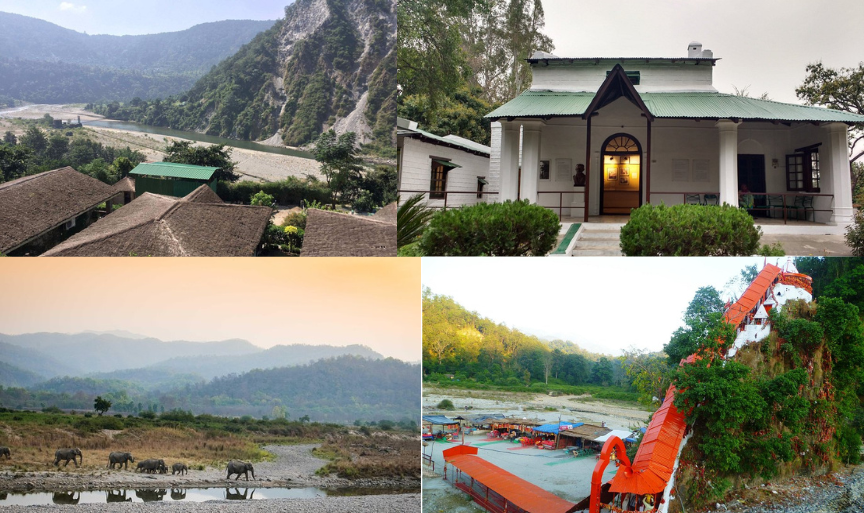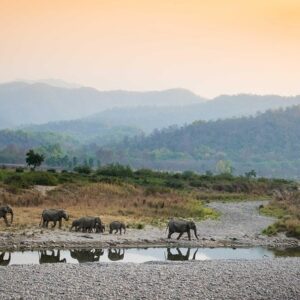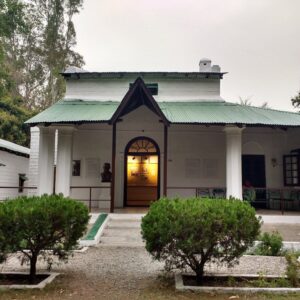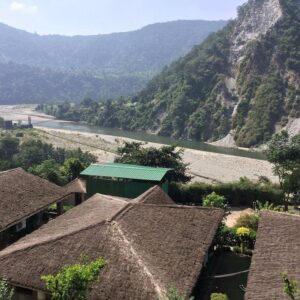"Our trip to Jim Corbett was an unforgettable experience! The safaris were thrilling, and we spotted tigers and elephants up close. The natural beauty of the park is breathtaking, and staying in a jungle lodge was a unique and relaxing experience. It's a must-visit for any wildlife lover!"
- Home
- About Us
- International
- Africa
- America
- Asia
- Australia & New Zealand
- Europe
- Middle East
AfricaEgypt
Mauritius
Zimbabve
AmericaAsiaAustralia & New ZealandEuropeCentral and Eastern Europe
Highlights
Mediterranean Europe
Middle East - Domestic
- North India
- South India
- East and North East
- Rajasthan, West and Central
North IndiaDelhi
Himachal Pradesh
Uttarakhand
Amritsar
Chandigarh
Punjab & Haryana
Uttar Pradesh
South IndiaAndaman and Nicobar Islands
Kerela
Andhra Pradesh
Tamil Nadu
East and North EastAssam
Nagaland
Tripura
Meghalaya
Rajasthan, West and Central - Temple Darshan
- Group Booking
- Blogs
- Contact Us
Sights

Explore Jim Corbett
Jim Corbett National Park, established in 1936 in Uttarakhand, India, is the country’s oldest national park. It is renowned for its rich biodiversity, particularly Bengal tigers, and plays a crucial role in tiger conservation. The park features diverse landscapes, including forests, grasslands, and rivers, and offers safaris for wildlife enthusiasts to experience its stunning natural beauty.
Places You'll See




Tour Highlights
- Well planned Tour itinerary.
- Kitchen as per our own convenience.
- Best hotels through out the tour.
- Unique tour of Pilgrim Sights and Scenic Beauty
- Stay in destinations that have proper facilities like hospitals, Market.
- Our groups are scheduled back to back, which is very helpful.
Tour Itinerary
Jim Corbett
Days Plan
Day 1: Arrival & Safari
- Morning: Arrive at Jim Corbett and check into your accommodation.
- Afternoon: Visit the Corbett Museum to learn about Jim Corbett’s life and legacy.
- Evening: Enjoy a jeep safari in the Dhikala Zone for wildlife sightings like tigers, elephants, and various birds.
Day 2: Wildlife & Sightseeing
- Morning: Take a safari in the Jhirna Zone, known for its diverse flora and fauna.
- Afternoon: Visit the Garjiya Devi Temple, perched on the banks of the Kosi River, offering a peaceful retreat.
- Evening: Relax by the river or enjoy a nature walk in the Sitabani Forest Reserve for birdwatching.
Day 3: River & Departure
- Morning: Enjoy a peaceful morning by the Kosi River for birdwatching or a quiet retreat.
- Afternoon: If time permits, take another short safari or explore the nearby areas.
- Evening: Depart from Jim Corbett.
Notes:
• 2 passport size photos
• Adult – Original + photocopy of any of the ID proof i.e. Aadhar Card / Driving Licence / Voters ID / Passport
• Child – Original + photocopy of any of the ID proof i.e. Aadhar Card / School ID / Passport
• Infant – Aadhar Card / Birth certificate
• NRI / Foreign nationals – Mandatory Passport + Valid Indian visa / OCI card / PIO card
• Above mentioned ID proof is mandatory at the time of booking and carry the same ID proof on tour as well
Jim Corbett
Tour Details
Hear from Our
Happy Travelers

"I visited Jim Corbett with my family, and we had an amazing time. The kids loved the jeep safari in the Dhikala Zone, and we were lucky to see a tiger! The park's serene atmosphere and the lush greenery made it the perfect getaway from city life. We'll definitely return!"

Best Time to Visit Jim Corbett National Park:
The best time to visit Jim Corbett National Park is from November to June. During the winter months (November to February), the weather is pleasant and ideal for safaris, with wildlife sightings being at their peak. The summer months (March to June) are also a great time to visit as animals are more likely to be seen near waterholes. However, the monsoon season (July to September) should be avoided due to heavy rains, as safaris are closed during this period.
How to Reach Jim Corbett National Park:
By Air: The nearest airport is Pantnagar Airport, approximately 50 km from the park. Alternatively, you can fly to Indira Gandhi International Airport (Delhi) and then take a road journey to the park (approximately 5-6 hours).
By Train: The nearest railway station is Ramnagar, well-connected by trains from major cities like Delhi, Haridwar, and Kathgodam.
By Road: Jim Corbett is well-connected by road. You can drive from Delhi or other nearby cities, and it takes approximately 5-6 hours from Delhi to the park.
Importance of Jim Corbett National Park:
Jim Corbett National Park is a significant part of India’s wildlife conservation efforts. It was the first national park in India, established to protect the endangered Bengal tiger under Project Tiger. The park is home to diverse wildlife, including tigers, leopards, elephants, and over 600 bird species. It plays a crucial role in preserving the region’s biodiversity and is a popular destination for wildlife enthusiasts and photographers.

Book Now and embark on your next unforgettable adventure
With our team of seasoned travel experts and local guides, we ensure that each trip is crafted to perfection, tailored to your preferences, and filled with unforgettable memories.



